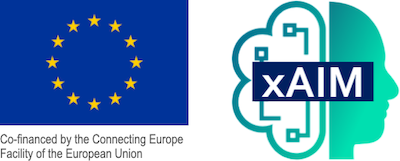General
Welcome to the home page of the Text Mining Course. The course consists of short chapters that we will cover in each lecture. Each lecture will finish with a homework assignment. Note that assignments have fixed dates.
This course is offered in the xAIM's master's program. The course is co-financed by the European Commission instrument "Connecting Europe Facility (CEF) Telecom" through the project "eXplainable Artificial Intelligence in Healthcare Management project" (2020-EU-IA-0098), grant agreement number INEA/CEF/ICT/A2020/ 2276680.

Copyright
This material is offered under a Creative Commons CC BY-NC-ND 4.0 license.
Software
- Orange Data Mining, visit this webpage to install Orange and check out its documentation
Additional Material and Communication Channels
- Please join an IDS communication server on Discord (this is an invite link) for course-related info, discussions and Q&A.
- Lectures start on Thursday, October 26, at 18.00 CET (sharp!). Lessons will be recorded.
Dates and Online Sessions
Grading
- 70% Four homework assignments, one after online session
- 30% Exam, about 20 choice questions, lasting 1.5 hour
Exam
Between Feb 16, 2024 and Mar 15, 2024.